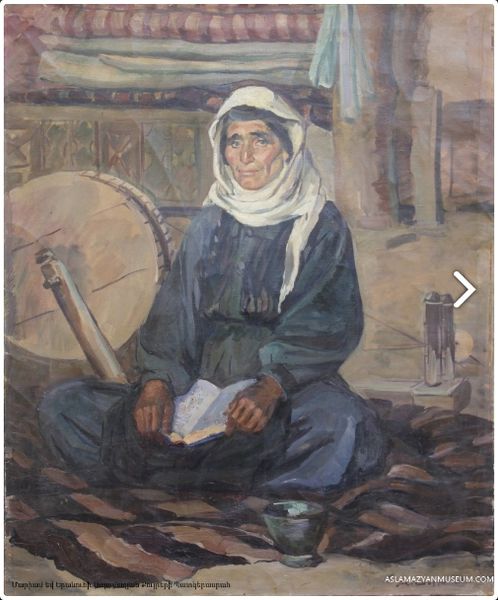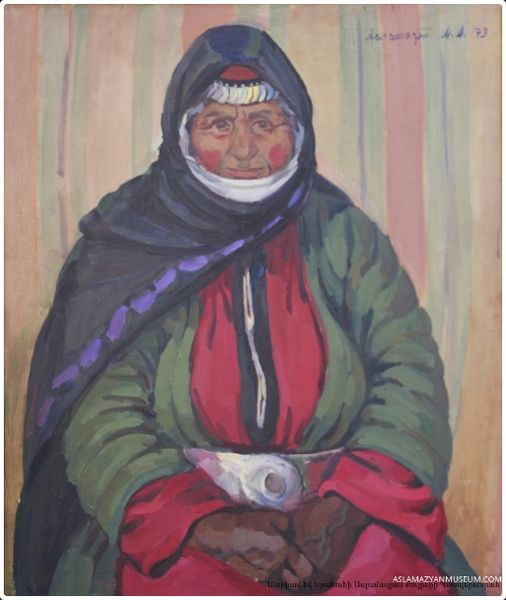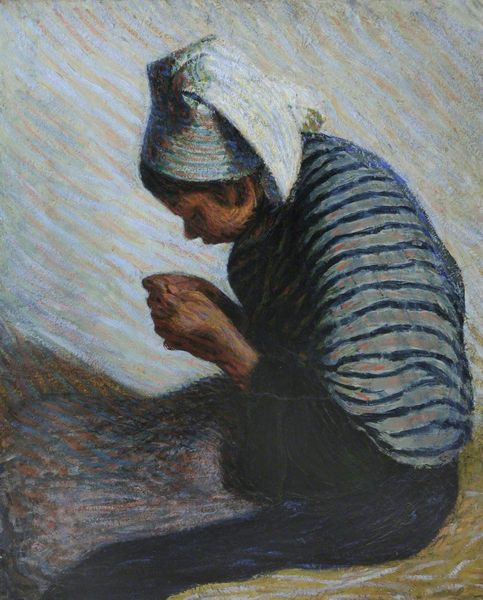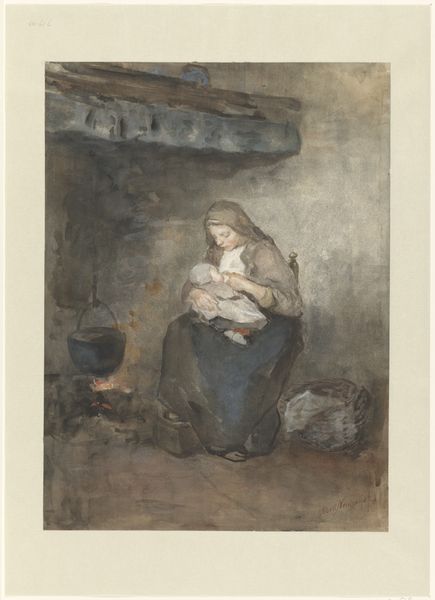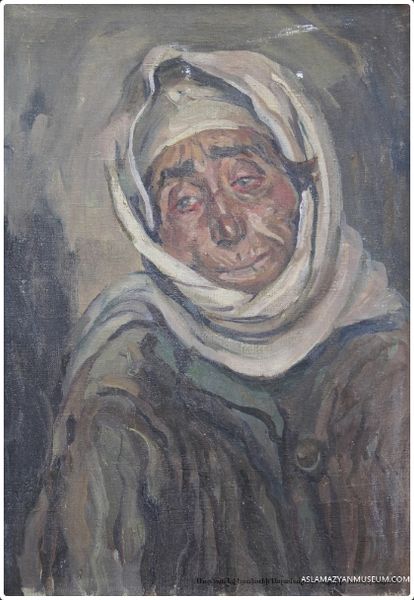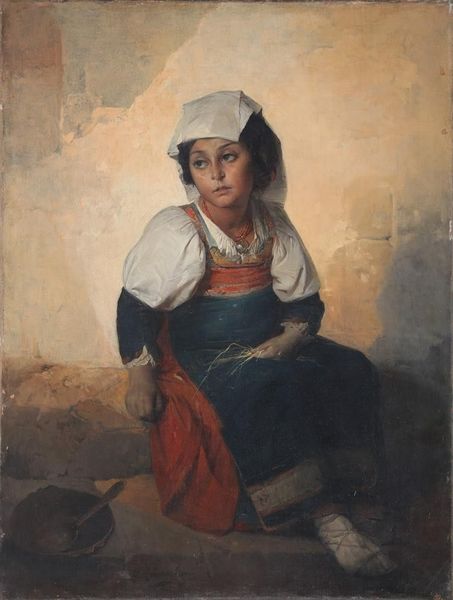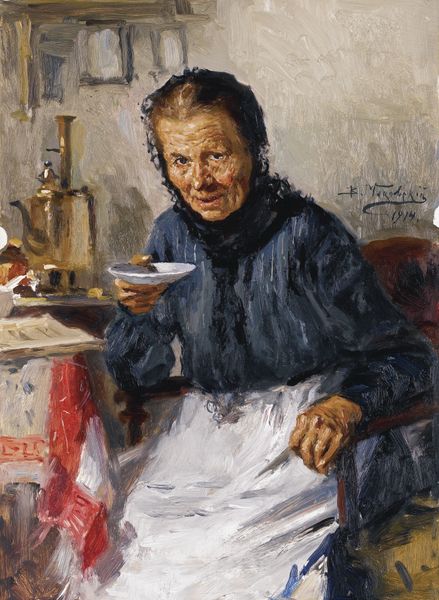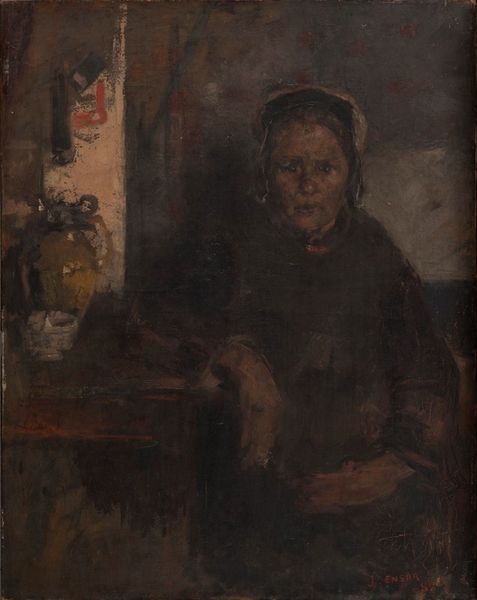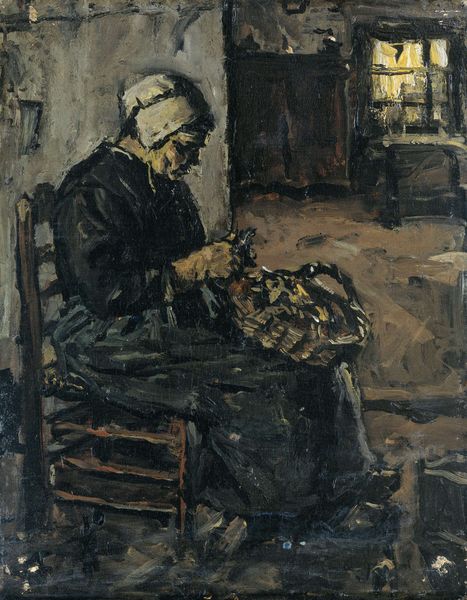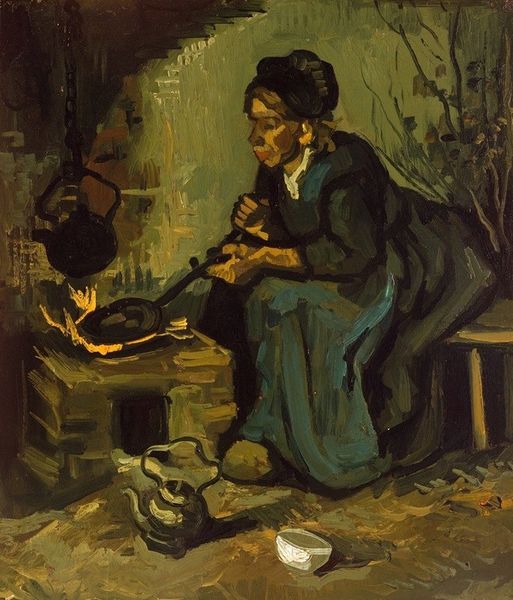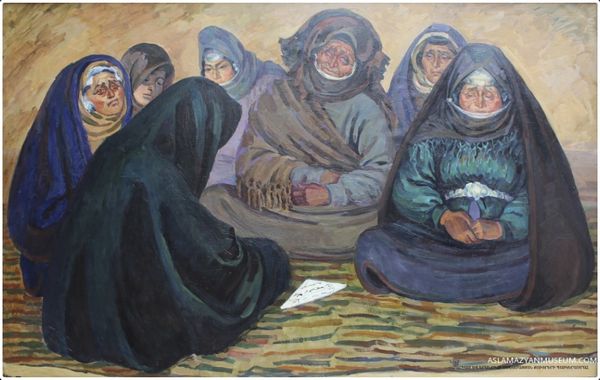
painting, oil-paint
#
portrait
#
painting
#
oil-paint
#
soviet-nonconformist-art
#
oil painting
#
genre-painting
#
portrait art
#
realism
Dimensions: 92 x 78 cm
Copyright: Mariam Aslamazian,Fair Use
Curator: Mariam Aslamazian's 1955 oil painting, "Grandmother Mariam," offers a powerful glimpse into Soviet Armenian life. What's your immediate reaction? Editor: Stark and direct. The palette is rather subdued, almost monochromatic, relying on subtle variations of tone, predominantly in blues and browns. There's a strong central axis with her seated figure. It grounds the work. Curator: I agree. And consider the context: Aslamazian painted this during a period of intense industrialization and collectivization in Armenia. This portrait, emphasizing a grandmother in a traditional setting, almost feels like a quiet act of resistance, valuing familial history and the older ways. The patterns in the carpet hint at weaving traditions central to Armenian identity and the historical labor of women. Editor: It is compelling to see what’s included and how the figure engages the immediate space. Take the composition’s flatness: Is it deliberate or born of limited perspective and space? It recalls folk art traditions. The way the subject engages us, unadorned, with a meal right in front makes the familiar, profound. Note how this domestic moment intersects daily bread and work of hands to give meaning and gravity to the portrait’s subject. Curator: Absolutely, Aslamazian was likely deeply aware of the rapidly shifting cultural landscape. Representing everyday labor honors the individual. Even her clothing—the layers, the practical headscarf, the woven belt— speaks to both utility and cultural identity. The meal, those simple ingredients on the platter, symbolize the fruits of their labor. Editor: Looking at Aslamazian's technique—the brushstrokes are visible, raw. This, combined with the earthy pigments and palette lends an honesty. The details of her face, that knowing look of resilience. What is not being said is very central to the picture’s visual impact. This creates intimacy for the viewers. It’s a compelling union of realism and Soviet Nonconformist expression. Curator: The lack of idealization is very important. This isn’t about portraying a perfect or romanticized version of womanhood, but a very real, hardworking individual, whose presence speaks volumes about Armenian history. Editor: It feels like an intimate, unfiltered visual record. Aslamazian’s approach is effective in conveying this woman's character and inner resilience through simple colors, unrefined texture, and strong engagement in her gaze. Curator: Indeed. This piece speaks volumes, doesn't it? A tribute through labor and familial tradition rendered visible for us. Editor: Yes, by using a formal lens and deconstructing its visual and symbolic elements, "Grandmother Mariam" ultimately emerges as more than just a painting but is truly a document, too.
Comments
No comments
Be the first to comment and join the conversation on the ultimate creative platform.
